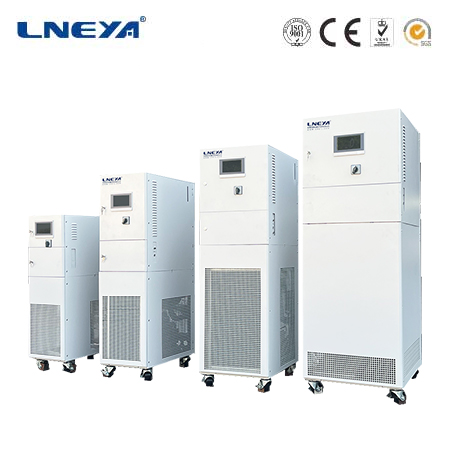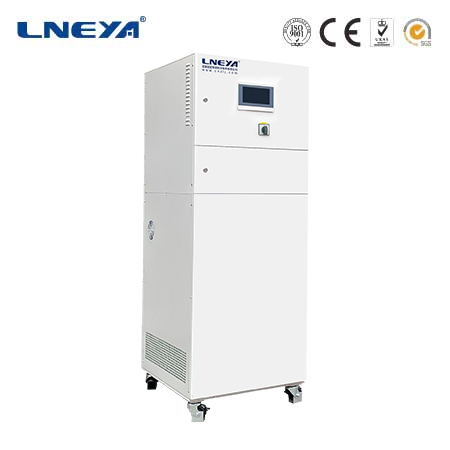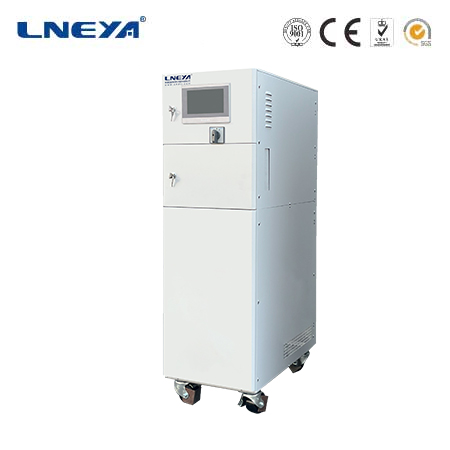temperature controller unit
Introduction
In an array of environments, from industrial manufacturing plants and scientific laboratories to residential and commercial buildings, maintaining the right temperature is essential. Temperature controller units serve as the nerve center of temperature – regulation systems, enabling precise control over thermal conditions. These units play a vital role in ensuring product quality, process efficiency, energy conservation, and user comfort. By accurately monitoring and adjusting temperature, they contribute to the smooth operation of countless systems and processes.

How Temperature Controller Units Work
At the core of a temperature controller unit is a feedback loop mechanism. Temperature sensors, which are the first line of detection, constantly monitor the ambient or process temperature. Once the sensors detect a change in temperature, they convert this physical quantity into an electrical signal, which is then transmitted to the controller.
The controller, the brain of the system, compares the incoming signal from the sensor with the pre – set temperature setpoint. If there is a deviation between the measured temperature and the setpoint, the controller calculates the necessary corrective action. Based on this calculation, it sends control signals to actuators, such as heaters, coolers, fans, or valves. For instance, if the measured temperature is lower than the setpoint, the controller will signal a heater to increase its output or a cooler to reduce its activity, and vice versa. This continuous cycle of sensing, comparing, and controlling ensures that the temperature remains as close as possible to the desired setpoint.
Types of Temperature Controller Units
Mechanical Temperature Controllers
Working Principle: Mechanical temperature controllers operate on simple physical principles. One common type uses a bimetallic strip, which consists of two different metals bonded together. Each metal has a different coefficient of thermal expansion. When the temperature changes, the bimetallic strip bends due to the differential expansion of the two metals. This bending motion is used to open or close electrical contacts, thereby turning heating or cooling devices on or off. Another type may use a liquid – filled bulb and capillary tube system. As the temperature changes, the liquid expands or contracts, creating pressure changes that actuate a mechanical switch.
Advantages and Disadvantages: Mechanical temperature controllers are generally low – cost and easy to understand and maintain. They do not require complex electronics or programming, making them suitable for simple applications where high precision is not critical. However, they lack the accuracy and flexibility of more advanced controllers. Their response times can be relatively slow, and they may not be able to handle complex control strategies or multiple setpoints.
Applications: These controllers are commonly found in basic household appliances like refrigerators and freezers, where they maintain a relatively stable temperature range. They are also used in some industrial settings for simple temperature – control tasks, such as controlling the temperature of small ovens or incubators.
Electronic Temperature Controllers
Working Principle: Electronic temperature controllers rely on electronic components such as transistors, integrated circuits, and microprocessors. They receive the electrical signal from the temperature sensor and process it using electronic circuits. These controllers can perform more complex calculations compared to mechanical ones. For example, they can use proportional control, where the output is proportional to the error between the measured temperature and the setpoint. Some advanced models also incorporate integral and derivative control actions, similar to PID (Proportional – Integral – Derivative) control, to achieve more precise temperature regulation.
Advantages and Disadvantages: Electronic temperature controllers offer higher accuracy and faster response times than mechanical controllers. They can be easily adjusted and calibrated, and many models allow for programming of multiple setpoints and control parameters. However, they are generally more expensive than mechanical controllers and may require some technical knowledge for installation and maintenance. Additionally, they are more susceptible to electrical interference and component failures.

Applications: Electronic temperature controllers are widely used in a variety of applications, including commercial heating, ventilation, and air – conditioning (HVAC) systems, industrial process control, and scientific research equipment. In a commercial kitchen, for example, an electronic temperature controller can precisely regulate the temperature of ovens and refrigeration units to ensure food safety and quality.
Programmable Logic Controllers (PLCs) for Temperature Control
Working Principle: PLCs are industrial – grade digital computers that can be programmed to perform a wide range of control tasks, including temperature control. They receive input signals from temperature sensors, process these signals using user – defined programs stored in their memory, and then send output signals to control actuators. PLCs use ladder logic or other programming languages to define the control algorithms. They can handle multiple inputs and outputs simultaneously, allowing for complex control strategies that may involve coordinating multiple temperature – control devices or integrating temperature control with other process variables.
Advantages and Disadvantages: PLCs offer great flexibility and scalability. They can be customized to meet specific temperature – control requirements in industrial settings, and their programs can be easily modified or updated as needed. PLCs are also highly reliable and can operate in harsh industrial environments. However, they require specialized programming knowledge and skills, and the initial setup and programming can be time – consuming and costly.
Applications: PLCs are commonly used in large – scale industrial processes such as chemical plants, power generation facilities, and manufacturing plants. In a chemical reactor, a PLC can be programmed to control the temperature based on multiple factors, including the reaction rate, the flow rate of reactants, and the pressure inside the reactor, ensuring optimal reaction conditions.
Intelligent Digital Temperature Controllers
Working Principle: Intelligent digital temperature controllers are the most advanced type, often incorporating microprocessors, digital signal processing, and sophisticated control algorithms. They can communicate with other devices and systems using various communication protocols such as RS – 485, Ethernet, or Modbus. These controllers can not only perform basic temperature – control functions but also offer features like self – tuning, where the controller automatically adjusts its control parameters for optimal performance, and data logging, which records temperature data over time for analysis. Some intelligent controllers can also learn from historical data and adjust their control strategies accordingly, adapting to changing process conditions.
Advantages and Disadvantages: Intelligent digital temperature controllers provide the highest level of accuracy, precision, and functionality. They are highly adaptable and can be integrated into complex automation systems. Their advanced features enable better process optimization and energy savings. However, they are the most expensive type of temperature controller, and their complexity may require trained technicians for installation, programming, and maintenance.
Applications: These controllers are used in high – end applications such as semiconductor manufacturing, pharmaceutical production, and aerospace testing facilities. In a semiconductor fabrication plant, intelligent temperature controllers are crucial for maintaining the precise temperature required for processes like chip etching and deposition, where even minor temperature variations can affect the quality and performance of the chips.
Key Factors to Consider When Choosing a Temperature Controller Unit
Accuracy Requirements
Measurement Precision: Different applications demand varying levels of temperature – measurement accuracy. For scientific research or pharmaceutical manufacturing, where even a small temperature deviation can have significant consequences, controllers with high – precision sensors and accurate control algorithms are essential. Look for controllers that specify their accuracy in terms of temperature error, such as ±0.1°C or better. In contrast, for general – purpose heating or cooling in residential settings, a lower level of accuracy may be acceptable.

Setpoint Resolution: The setpoint resolution determines how finely the desired temperature can be set. A controller with a high setpoint resolution allows for more precise control. For example, a controller with a setpoint resolution of 0.1°C can be set to a specific temperature like 23.5°C, while a controller with a resolution of 1°C can only be set to whole – number values.
Control Range
Minimum and Maximum Temperatures: Consider the range of temperatures that the controller needs to handle. Some applications, such as cryogenic storage or high – temperature industrial furnaces, require controllers that can operate over a wide temperature range, from extremely low to very high temperatures. Ensure that the selected controller can accommodate the minimum and maximum temperatures required by your application.
Temperature Gradient Control: In some processes, controlling the rate of temperature change (temperature gradient) is as important as maintaining a specific temperature. For example, in heat – treating metals, a controlled temperature gradient is necessary to achieve the desired material properties. Look for controllers that offer features for controlling the temperature gradient, such as ramp – rate settings.
Communication Capabilities
Connectivity Options: If you need to integrate the temperature controller unit with other devices or systems, such as a central monitoring station, a programmable logic controller, or a computer for data analysis, consider the communication capabilities of the controller. Common communication protocols include RS – 232, RS – 485, Ethernet, and wireless options like Wi – Fi or Bluetooth. Choose a controller with the appropriate communication interface for seamless integration.
Remote Monitoring and Control: Some applications benefit from the ability to monitor and control the temperature controller remotely. This is especially useful in large facilities or in situations where manual access to the controller is difficult or inconvenient. Controllers with remote – monitoring and – control capabilities allow users to view the current temperature, adjust the setpoint, and receive alerts or notifications from a remote location.
Power Supply and Compatibility
Power Requirements: Ensure that the temperature controller unit is compatible with the available power supply in your application. Different controllers may require different voltages (e.g., 12V DC, 24V DC, 110V AC, or 220V AC) and power ratings. Also, consider factors such as power – supply stability and the need for surge protection, especially in industrial environments where electrical fluctuations may occur.
Compatibility with Actuators and Sensors: The controller must be compatible with the temperature sensors and actuators that you plan to use. This includes electrical compatibility (e.g., matching signal types and voltage levels) and physical compatibility (e.g., the appropriate connector types). Some controllers may have built – in signal conditioning for specific types of sensors, while others may require external signal – conditioning modules.
Installation, Calibration, and Maintenance of Temperature Controller Units
Installation
Location Selection: Choose an appropriate location for installing the temperature controller unit. It should be placed in an area where it is protected from environmental factors such as moisture, dust, extreme temperatures, and mechanical vibrations. In industrial settings, it may need to be installed in a control panel or a dedicated enclosure. Ensure that there is easy access to the controller for programming, adjustment, and maintenance.
Wiring and Connection: Follow the manufacturer’s instructions carefully for wiring the controller to the temperature sensors and actuators. Use the appropriate cables and connectors, and make sure all connections are secure and properly insulated. For electrical connections, adhere to local electrical codes and safety standards. If the controller has communication interfaces, connect it to the relevant network or devices according to the specified protocol.
Calibration
Importance of Calibration: Calibration is essential to ensure the accuracy of the temperature controller unit. Over time, temperature sensors may drift or lose their accuracy due to factors such as aging, exposure to harsh environments, or mechanical stress. Regular calibration helps to correct any errors and ensures that the controller is providing accurate temperature readings and control.
Calibration Procedures: The calibration procedure varies depending on the type of controller and sensor. In general, it involves comparing the controller’s measured temperature with a known – accurate reference temperature source, such as a calibrated thermometer or a temperature – controlled bath. Adjust the controller’s settings or perform software – based calibration to bring the measured temperature in line with the reference temperature. Some controllers may have built – in calibration functions, while others may require the use of external calibration equipment.
Maintenance
Regular Inspections: Conduct regular inspections of the temperature controller unit, including checking for loose connections, damaged cables, or signs of component wear. Clean the controller and its surrounding area to prevent the accumulation of dust and debris, which can affect its performance. In industrial environments, where the controller may be exposed to contaminants, more frequent cleaning may be required.
Component Replacement: Over time, components within the temperature controller unit, such as sensors, relays, or integrated circuits, may fail. If a component shows signs of malfunction, such as inaccurate temperature readings, erratic control behavior, or failure to respond, replace it promptly with a compatible replacement part. Follow the manufacturer’s instructions for component replacement, and ensure that the new component is properly installed and calibrated.
Software Updates: For intelligent digital temperature controllers that have software – based features, check for software updates regularly. Manufacturers may release updates to improve the controller’s performance, add new features, or fix bugs. Installing software updates can help to keep the controller operating at its best and ensure compatibility with other devices or systems.
Conclusion
Temperature controller units are indispensable for maintaining precise thermal conditions in a wide range of applications. By understanding their working principles, different types, key selection factors, and proper installation, calibration, and maintenance procedures, users can make informed decisions when choosing and using these units. Whether it’s for a simple household appliance or a complex industrial process, the right temperature controller unit can enhance efficiency, improve product quality, and contribute to overall system reliability and safety.
Related recommendations
spec chiller
463Spec Chillers: A Detailed Analysis Definition of Spec Chillers:Spec chillers are chiller systems designed to meet specific cooling requirements as outlined in technical specifications. These sy...
View detailsr410a chiller
294R410A Chillers: A Comprehensive GuideR410A chillers have become a staple in modern cooling systems, offering a reliable and efficient solution for a wide range of applications. As the demand for ...
View detailsheating and cooling systems
399Introduction to Heating and Cooling Systems Heating and cooling systems play a vital role in ensuring the comfort and well-being of occupants in residential, commercial, and industrial building...
View details5 ton chiller compressor price
324The 5-ton chiller compressor market in Australia is influenced by a variety of factors that contribute to its price and performance. This article offers an in-depth look at the cost factors, marke...
View details
 LNEYA Thermal Test Chillers
LNEYA Thermal Test Chillers






HelloPlease log in